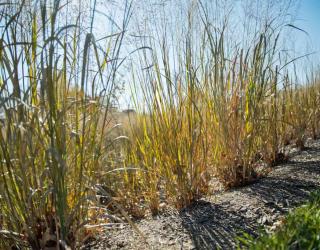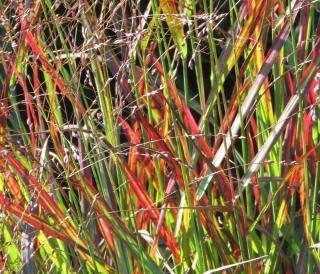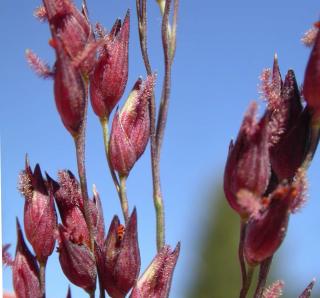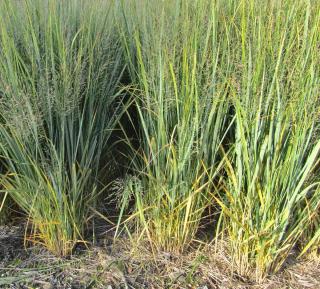

Very tolerant as regards its growing environment, Panicum virgatum will do well in any garden.
Panicum virgatum key facts :
Botanical name – Panicum virgatum
Common name – switch grass
Family – Poaceae
Type – Grasses
Height – 4 to 6 feet when blooming (1.2 to 1.6 m)
Planting density – 2 to 3 plants per sq. yard (m²)
Exposure – full sun
Soil – any type, rich, moist
Flowering : beginning of fall
Foliage : evergreen
Switch grass can adapt to any growing environment it’s planted in. However, to grow best, it’s preferable to plant it in a sunny, open space. There are no constraints regarding soil type. However, in ideal cases, it should stay moist and contain lots of organic matter.
To increase chances of it settling in very well, it’s recommended to plant your Panicum virgatum in fall. It can thus recreate a new root system that will withstand any future lack of water. Spring planting is an option, but it comes with the added burden of having to complement rain with extra watering.
 Planting of switch grass is pretty straightforward:
Planting of switch grass is pretty straightforward:
To lock water into the soil and reduce the need to water, spread a layer of mulch about 1 to 2 inches (4 to 5 cm). You can opt for hemp mulch, flax mulch, pine bark, etc. Have fun playing around with colors and textures!
 Grasses have one major advantage: they don’t require much care, and Panicum virgatum is no exception. At the end of spring or at the beginning of summer, just cut back the clump to rejuvenate the foliage.
Grasses have one major advantage: they don’t require much care, and Panicum virgatum is no exception. At the end of spring or at the beginning of summer, just cut back the clump to rejuvenate the foliage.
Although switch grass resists drought well enough once it’s properly settled in, you should nonetheless check if it needs watering during times of drought during the first few years of growing.
 To get new clumps of Panicum virgatum, simply divide the grass in fall with these three steps:
To get new clumps of Panicum virgatum, simply divide the grass in fall with these three steps:
Switch grass resists diseases quite well, though it might be infected by leaf rust on hot and wet summers.
As for parasites, aphids might weaken the plant if they’re too numerous.
The elegant Panicum virgatum is the perfect plant to embellish a flower bed. As for many other types of grasses, the overall impact is nicest when you plant it in clusters. Pair it with other grasses such as Deschampsia, Chasmanthium, Briza media and Achnatherum.
Switch grass is one of the late-flowering grasses, it waits until the beginning of fall to bloom.
 Don’t worry, you won’t be attending a devilish concert. This cultivar earned its name thanks to the surprising color of its foliage: metallic blue. The flower clusters take on a purple hue at the beginning of the blooming. If you want something that stands out, ‘Heavy Metal’ was bred for you!
Don’t worry, you won’t be attending a devilish concert. This cultivar earned its name thanks to the surprising color of its foliage: metallic blue. The flower clusters take on a purple hue at the beginning of the blooming. If you want something that stands out, ‘Heavy Metal’ was bred for you!
This cultivar also has interesting foliage: dark green with hints of reddish-brown when leaves first appear, it gets redder and redder during the hot season and takes on a yellow hue when fall comes around. With the ‘Rehbraun’ cultivar, each season is different from the next: perfect to make your garden appealing in every season.